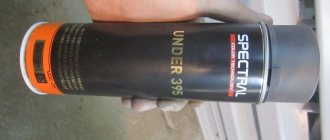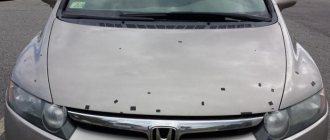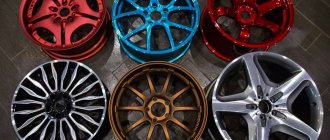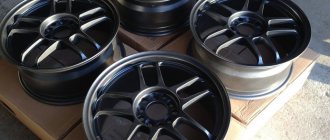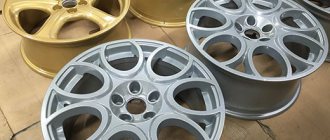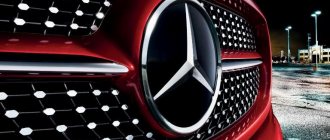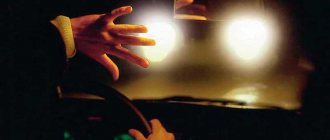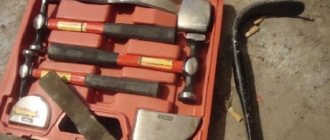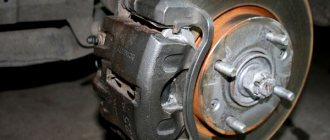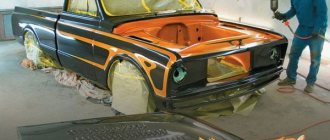Description and characteristics
In fact, the cans contain all the same types of primer for cars that are produced in metal containers, namely:
- acrylic
- epoxy
- acid.
The difference is that it is customary to produce two-component formulations in metal containers. They must be properly prepared before use. A hardener and solvent are added, and only after that the product is ready for use.
Epoxy primer in a can
An aerosol is always a one-component composition that is completely ready for use and does not require additional preparatory manipulations. This is the absolute convenience of the spray.
In terms of its properties and characteristics, the aerosol is no different from soil in jars. The only difference may be the density. It is logical that the aerosol should spray well and provide an even, high-quality coating on metal or plastic. Therefore, it should have appropriate fluidity. If you want to get a dense, viscous primer for your car, buy the product in a can - a spray will not suit you.
But it is suitable for application to the following types of coating:
- black metals;
- chrome steel;
- galvanized steel;
- light alloys;
- plastic.
Primer in a can for plastic
Spray painting a car
It is important to be patient when spray painting as each coat of paint will take longer to dry than when painting with a spray gun.
p, blockquote 13,0,0,0,0 —>
The minimum temperature for spray painting is + 10 degrees Celsius. The ideal temperature is approximately +20 degrees.
p, blockquote 14,0,0,0,0 —>
Before painting, you need to determine at what distance you will spray the paint.
p, blockquote 15,0,0,0,0 —>
Typically, the distance from the nozzle to the surface is 20–25 cm.
p, blockquote 16,0,0,0,0 —>
You must maintain the same distance at all times. The nozzle, when painting, must always be perpendicular to the surface.
p, blockquote 17,0,0,0,0 —>
p, blockquote 18,0,0,0,0 —>
When spraying, the droplets should merge and form a single layer. If during spraying the drops on the surface of the part lie separately from each other, then the distance is too large.
p, blockquote 19,0,0,0,0 —>
With the correct distance of the nozzle from the surface, the coating should be smooth, glossy, and without smudges. The paint in the can is generously diluted with solvent, and the total percentage of pigment in the total volume of the mixture is not high, so it has low coverage. Several thin coats are required to cover the repair area or a different color of paint.
p, blockquote 20,0,0,0,0 —>
Applying thin layers instead of one thick one will prevent streaks from forming.
p, blockquote 21,0,0,0,0 —>
Never apply the next coat until the previous one has dried. Even if there is no smudge, the overall paint layer will take longer to dry. The time required to dry between coats depends on humidity and air temperature, usually no more than 10–15 minutes. You can reduce this time, but then the overall layer will take much longer to dry.
p, blockquote 22,1,0,0,0 —>
You need to start spraying and stop spraying outside the part. Thus, an already formed torch will fall on the surface and no spots will form during the initial spraying. That is, you need to press and release the button with the nozzle outside the part.
p, blockquote 23,0,0,0,0 —>
You need to paint in rows that overlap each other by 50–75%. It is important to develop the speed of movement of the hand with the spray can. If you move too quickly, the paint will not have time to form an even layer. If you spray too slowly, a drip may form.
p, blockquote 24,0,0,0,0 —>
Let's consider the algorithm for painting with a high-quality aerosol can, which has a fairly wide spray pattern and high-quality paint with good covering ability.
p, blockquote 25,0,0,0,0 —>
The first layer should be thin. Such that the surface to be painted will be visible through it. It applies quickly. At this stage, the paint pigments will lie randomly on the surface, this is normal.
p, blockquote 26,0,0,0,0 —>
After the first layer has dried, subsequent layers should be applied more slowly. The nozzle can be brought a little closer to the surface. This will make the layer thicker. At this stage, it is necessary to block the paint passes by 50%.
p, blockquote 27,0,0,0,0 —>
When painting, it is important that the last layer is smooth and glossy. To do this, you need to slow down the movement of your hand a little when spraying and make passes, overlapping one row with another not by 50, but by 75%. You need to gain experience, since when creating a good gloss there is a possibility of smudges.
p, blockquote 28,0,0,0,0 —>
When painting several parts or the entire body at a time, dust from painting one part can fall on an adjacent, already painted part and reduce its gloss. To avoid this problem, you should try to keep the nozzle strictly perpendicular to the part being painted and not turn it at an angle. Rotating the nozzle when spraying is one of the reasons for spray flying onto adjacent body panels.
p, blockquote 29,0,0,0,0 —>
If you consider that the paint did not cover well in one pass in a particular place, then you do not need to immediately re-spray in this place. This may cause a leak. It is better to dry the layer and repeat spraying again.
p, blockquote 30,0,0,0,0 —>
The paint will dry completely within a day. It is better to wait two days before using the painted part.
Advantages and disadvantages
Aerosol soil, like any other product, has its advantages and disadvantages. If we talk about the advantages of the spray, we can highlight the following factors:
- simplicity and ease of use;
- compactness;
- even smooth coating;
- the possibility of smooth transitions during local processing;
- lack of preliminary preparation of material for work.
Primer BLACK 400 ml aerosol
The disadvantages of the spray include 2 factors: low productivity and the ability to use only a fluid consistency. To paint the entire car, it is unlikely that you will be comfortable working with spray cans - it is troublesome, time-consuming and ineffective. It is much more rational to prepare a large container of a two-component product and use a pneumatic gun. But the aerosol is indispensable for local types of car repairs. If you are painting over a scratch, scuff or chip, the aerosol option is much more convenient. It is more efficient and will help to better process the desired area.
Sometimes liquid fluid mixtures are not suitable for treating a car body - they flow down the metal without giving the effect of a durable protective film. An aerosol auto primer will also not work for you here—you’ll have to buy viscous mixtures in cans.
Primer for cars in a can
Purpose and use of soils
A primer is a mixture with which, during repair work, the surface is treated before applying any finishing material. The soil helps to increase tenacity and frost resistance. In addition, the use of soil, leveling the absorbent surface, protects it from corrosion.
Advantages and disadvantages of the method
If the paintwork is only slightly damaged, many people try to avoid an expensive painting procedure.
In addition, this procedure can be carried out on your own by purchasing the appropriate cans of paint. It is important to carry out the procedure in the appropriate room and in compliance with all technologies.
Before that, you can evaluate all the advantages of this method:
- To carry out such painting, no special skills or preparation are required;
- using a spray can you can carry out high-quality repairs;
- any surfaces are covered, hard-to-reach places and bends are much easier to paint; no additional components in the form of a roller, spray gun, etc. are required during the work;
- if you have no experience in painting, you will be able to apply an even layer of paint;
- to apply an even layer you do not need to work with a roller or brushes;
- Spray painting will cost less than other means; this service is available to many motorists.
However, it is necessary to realize that all painting methods have their own nuances and disadvantages.
Spray painting is no exception to this issue, so be prepared for the following disadvantages:
- there are no detailed instructions on the rams for painting;
- Sometimes you come across cylinders of poor quality, so before applying to a car, test on another surface;
- Sometimes the declared shade and the real one may differ, so you should immediately purchase the required amount.
Select the color scheme in accordance with the labeling, but if you are still not sure of your choice, then you should consult with the experts in their field.
He will be able to carry out tinting using special equipment.
If the depth of the chip or scratch is insignificant, then it is not necessary to resort to painting; you can polish it.
If primer or metal is visible in the damaged area, then the work will be more serious and eliminating the defect will take longer, as will painting the damaged part of the body.
Spray painting a car is a step-by-step procedure that is ideal for doing it yourself, which allows you to save money at the same time.
This method is suitable for working with a small area of damage, but if the problems are serious, then contacting a service station cannot be avoided. All work will be carried out there in a special box.
Composition and technical characteristics
Acrylic primer. For metal processing, a primer with an acrylic composition based on organic solvents is used. This mixture has proven itself in practice as a reliable and high-quality composition, suitable for processing aluminum and duralumin coatings, helping to obtain a high-strength coating and its excellent protection.
When using such a primer, the properties of the metal do not change even when exposed to high temperatures, since acrylic has a temperature-compensating characteristic.
Acrylic primer is suitable for processing products whose surface is coated with:
- plastic;
- steel;
- aluminum;
- putty;
- metal and so on.
It is resistant to temperature, humidity and adverse weather conditions.
Acrylic aerosol primer is used to treat various types of plastic coatings, small areas such as a rear view mirror or a plastic bumper.
A primer used to prevent corrosion. To ensure good protection of metal parts from corrosion, as well as better adhesion of paint to the surface, an anti-corrosion primer is used.
Strengthening soil. This composition is used to eliminate scratches, dents, small defects, as well as any cracks on car bodies. Several layers of this highly adhesion primer are sufficient to fill mechanical damage.
Corrosive or acidic primer. This composition is designed to work only on metal; it corrodes a thin layer of coating and ensures reliable paint adhesion and fights corrosion. However, an acid primer does not remove rust, but does not allow it to spread.
Alkyd primer is universal, suitable for wood, concrete, and metal.
Why is this so important
Everything is not so scary when you decide to paint a stool, bench, children's airplane or some other thing. The question is much more complicated and serious if you need to restore your car or bicycle to its original appearance.
Safe food coloring.
Let’s make a reservation right away that it is theoretically possible to paint the entire car in this way, but the price, compared to a car service, will not be much less. Plus, with such volumes, decent quality may not work out, so leave this option to the professionals.
Do-it-yourself spray painting is appropriate for fragmentary repairs, for example when repairing a bumper or decorating deep scratches.
In the photo - the selection of compositions for coloring with your own hands
Selecting soil in aerosols
Mixtures of soils are produced in jars and cans in the form of an aerosol. Aerosol cans are one-component formulations; immediately after purchase they are ready for use without additional preparation.
Using an aerosol in cans is most convenient for use.
Aerosol is a product whose identifiable qualities are not much different from primers made from an aluminum container. After applying this component, the surface turns out to be very smooth, where the difference between the painted and untreated part is completely invisible.
Criterias of choice
When choosing a primer you need to consider:
- release date and expiration date;
- manufacturer's reputation;
- description and application features;
- compatibility with car body material.
Metallic painting using a spray can
When painting metallic from an aerosol can, it is better to apply all layers at an increased distance and quickly. Light metallics have low coverage. To completely cover the surface to be painted with such paint, many layers may be required.
p, blockquote 32,0,0,0,0 —>
When spraying metallic paint, too thick a coat of paint or insufficient drying time between coats can cause uneven metal flakes. The last layer of metallic should be sprayed at an increased distance from the surface. This will help position the metallic flakes more evenly.
p, blockquote 33,0,0,1,0 —>
Metallic paint should be top coated with varnish. By itself it is not glossy. Varnish gives shine and protection.
p, blockquote 34,0,0,0,0 —>
It is not advisable to sand such paint before varnishing. If there is such a need, then after sanding you need to apply a thin layer of paint, and only after that varnish. Sanding may be necessary if a lot of dust and debris has accumulated during painting. The paint is sanded after complete drying (about a day) with sanding paper P800-P1000.
p, blockquote 35,0,0,0,0 —>
Preparatory procedures, how to paint correctly
If you decide to carry out all the repair work on your own, then you should do everything as soon as possible. Once you discover damage, do not delay the process, as the problem may get worse.
Once the scratch reaches the metal, the oxidation process begins, leading to rust and corrosion. Because of these defects, more serious work will be required.
Before painting, the car is cleaned using conventional detergents. You need to wait until the surface is dry and then degrease it.
For this, special wipes and solvent are used. After saturating one napkin with it, wipe the surface dry with the second. To ensure greater comfort, you need to remove the part that will be worked on.
All other areas of the body that cannot be painted are covered with protective film and masking tape.
To prevent painting defects from appearing, a special chamber is needed; the room must be completely clean of dust and other contaminants. Lights, like devices, should be directed toward the work surface to avoid glare.
Work should not be carried out outdoors, as exposure to sunlight will negatively affect the result. At high temperatures outside, only the first layer is subject to drying out; it will take longer to wait for complete drying.
Therefore, before applying a new layer, wait until the previous one dries.
Before spraying the can, you should shake it well. Try not to go overboard and cover up the rest of the components.
If you are not sure of the result, then you can try your hand at an old part that you have.
Don't forget to follow the existing instructions and stock up on the following tools:
- paint,
- sandpaper of different levels,
- putty and primer,
- antisilicon,
- polyethylene,
- masking tape,
- elements for protection.
When doing all the work yourself, be sure to consider hand protection; use a rubber or silicone spatula so as not to cause unnecessary damage to the surface. The work of the aerosol begins only after the primer has been applied, dried and polished.
Application methods
Acid primer can be applied using several methods and tools:
- Simple brush.
- Spray gun.
- By lowering a metal product into a solution.
- Electrical spraying.
- Using electrodeposition technology.
In everyday life it is customary to use the first 2 tools. Immersion technology is used in factories.
Is it possible to apply paint to acidic soil?
Experts do not recommend applying paint over a layer of one-component acid primer. Otherwise, the components may cause a change in the shade of the paint due to the action of the yellow pigment.
Instructions for spray painting a car
The dyeing process is divided into a certain number of stages. At the first stage, preparatory work is carried out, which includes cleaning the body, degreasing work, and the use of anti-silicone.
At the next stage, you need to decide on the shade. Having previously checked the body marking instructions, a specialized store will help you choose the required option.
To prevent an error, colorize the body. Specialized equipment and software will evaluate the level of color fading and other factors.
It is worth noting that you will have to spend a lot of money on the procedure. In addition, paint options such as “metallic” or “chameleon” cost much more, because these shades are the most popular.
If there is already rust on the body, then you need to get rid of it, in this case you will need sandpaper, which will turn the surface matte.
After degreasing, we begin the putty process. If the defects are more serious, then you should use putty with windshield washer.
Do not overdo it with a layer, because it may peel off. Layers are applied gradually until the surface is completely leveled.
Features of aerosol use and its consumption
During construction and renovation work, it is imperative to prepare the coating before applying finishing materials. There are some peculiarities of using soil in cans. Using primer in the form of an aerosol helps you do without tools: brushes, rollers. There are primers for treating brick, or concrete, plastic and wood. A can can be enough to cover an area of approximately 2 to 6 m2. Primer consumption depends on the type of coating and the degree of destruction. The instructions for use provide detailed information on how to use the aerosol and how much it will be needed for repairs.
When carrying out repair work, sometimes you have to deal with heavily rusted metal parts. It should be noted that it is not entirely necessary to clean them completely; you can simply remove loose fragments of rusty scabs with sandpaper. After this, the primer in the form of an aerosol is applied directly to the rust.
Applying varnish with a spray can
The varnish must be applied to paints with a metallic effect. Can also be applied over regular paint to add extra shine and protection.
p, blockquote 36,0,0,0,0 —>
The varnish is applied in 2–3 layers.
p, blockquote 37,0,0,0,0 —>
Before applying varnish, the paint must dry “tack-free,” that is, not stick when touched. The varnish in the can, as well as the paint, must be thoroughly shaken for 1-3 minutes before spraying. It is not advisable to spray it under the scorching sun, or on a surface very heated by the sun. Otherwise you will not get a good shine after application. The varnish will dry within 24 hours at a temperature of about 20 degrees Celsius. At lower temperatures, the drying time will naturally increase.
p, blockquote 38,0,0,0,0 —>
The varnish needs to be sprayed at a further distance than the paint. It is necessary that the torch be as wide as possible, but at the same time the varnish does not reach dry, but spreads normally over the surface, forming an even layer. If you spray closely, the varnish will create “stripes” that will be noticeable after drying.
p, blockquote 39,0,0,0,0 —>
If the applied paint has no defects, then the varnish can be applied after drying for 10 minutes, without preliminary sanding.
p, blockquote 40,0,0,0,0 —>
If the paint is to be varnished, it does not have to be glossy. The main thing is to apply it evenly. The final shine will be provided by varnish. If the painted coating turns out to have defects or inclusions of dust, then, after drying, it can be treated with p1000 sanding paper, then degreased and varnished.
p, blockquote 41,0,0,0,0 —>
Advantages of aerosol packaging
The use of epoxy primer in the form of an aerosol has certain advantages and benefits over other forms of applying a protective layer.
It doesn’t take much time to prepare the soil for use: you just need to vigorously shake the can several times and warm it up to about 20-25oC. When working with an aerosol, you need to spray with a very thin stream, slowly treating the surfaces of the most complex shapes and even closed profiles.
If not all of the epoxy primer in the can has come out, then the spray head must be tightly closed, and the mixture can be used again.
Preparing the surface for spray painting a car
Before painting, the surface must be prepared. It should be smooth, sanded for painting, clean and grease-free.
p, blockquote 8,0,0,0,0 —>
If necessary, you need to putty all the uneven areas, sand them and prime them. Paint will not hide them, but will only emphasize them. Bare metal should also be primed.
p, blockquote 9,0,0,0,0 —>
The soil can also be used in the form of aerosol cans. It is applied in 2-3 layers. This is a one-component primer, that is, it does not contain a hardener and dries for a long time. When the solvent evaporates, a fairly thin layer remains, so it is not able to fill large scratches and irregularities. The surface for such primer should be prepared with abrasive P180 - P220. When applying several layers, drying between layers is required for at least 10 minutes.
p, blockquote 10,0,0,0,0 —>
Dried primer and old paint for applying a new paint coating are prepared with P600-P1000 sanding paper.
p, blockquote 11,0,1,0,0 —>
All adjacent elements of the vehicle that are not subject to painting must be covered with camouflage materials.
p, blockquote 12,0,0,0,0 —>
